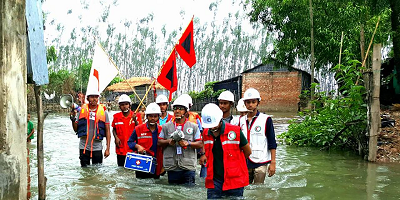
Early warning and early action saved thousands when Cyclone Mora struck Bangladesh in 2017(Source: IFRC)
By Omar H. Amach
BANGKOK, 9 April 2019 - To save lives, countries must customize how messages from their early warning systems reach at-risk populations.
This was the key takeaway from the Asia Pacific Forum for Sustainable Development side event on improving the “downstream” aspects of early warning systems.
This session was organized by the UN Office for Disaster Risk Reduction (UNISDR) and focused on the “last mile” of communication which pertains to all processes and mechanisms in place to deliver warning messages to at-risk populations.
“We have a responsibility to tailor our approaches to the needs and situations of those most at-risk and to ensure they receive these messages, understand them, and know how to act on them,” said Ms. Loretta Hieber Girardet, Head of UNISDR Asia-Pacific.
Ahead of the event, a multi-agency and stakeholder review of Sustainable Development Goal 13 had concluded that there was weak progress in the region on combating climate change which is not good news given that countries are likely to face more frequent and extreme weather events putting pressure on early warning systems.
The event featured a presentation of a study commissioned by UNISDR on the downstream performance of Indonesia’s early warning system in response to last year’s devastating Sulawesi earthquake and tsunami, which killed approximately 2,100 people, making it the deadliest disaster of 2018.
Speaking on behalf of the researchers who lead the study, Ms. Irina Rafliana, of the Indonesian Institute of Sciences, stated that many people failed to heed the warning messages to evacuate because of social and institutional issues. As a result, the study calls for an end-to-end tsunami early warning system that seeks to strengthen every part of the system, especially the “last mile.”